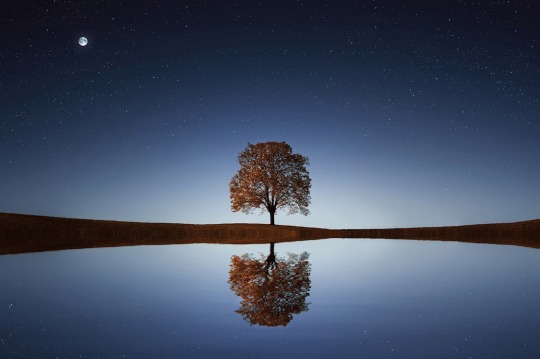Text
2nd Blog
Photography Tips for Beginners: A Guide to Capturing Stunning Images
Photography is an art form that allows you to freeze moments in time, capturing emotions, beauty, and stories through the lens of a camera. Whether you’re an aspiring photographer or just someone with a keen interest in learning more about photography, getting started can feel overwhelming. However, by mastering a few essential techniques and understanding the basics of photography, you can quickly improve your skills and start creating stunning images.
1. Understand Your Camera
Before you can take beautiful photos, it's important to become familiar with your camera, whether it’s a DSLR, mirrorless camera, or even a smartphone. Take the time to read your camera's manual and explore its settings. Most cameras offer automatic modes, but if you want full control over your photos, try to understand the key settings:
Aperture: This controls the amount of light entering the camera. A wider aperture (lower f-number) will give you a shallow depth of field, which is great for portrait shots with a blurred background. A smaller aperture (higher f-number) allows more of the scene to be in focus, which is ideal for landscape photography.
Shutter Speed: The amount of time the camera's sensor is exposed to light. Faster shutter speeds (e.g., 1/1000) are great for freezing motion, while slower shutter speeds (e.g., 1/30) create a blur effect, which can add artistic flair to moving subjects.
ISO: This controls the sensitivity of the camera’s sensor to light. Higher ISO values are useful in low-light conditions, but they can introduce noise (grain) into your images, so it’s a good idea to use the lowest ISO setting possible while still getting a properly exposed shot.
2. Composition is Key
One of the most important skills in photography is composition, which refers to how the elements in your photo are arranged. A well-composed image draws the viewer’s attention to the main subject and creates a sense of balance.
Rule of Thirds: Imagine your image divided into nine equal sections by two horizontal and two vertical lines. Place important elements of your image along these lines or at their intersections. This creates a more balanced, dynamic composition.
Leading Lines: Use natural or architectural lines in your environment to lead the viewer’s eye towards your subject. Roads, rivers, fences, or even shadows can serve as leading lines.
Framing: Use objects in the scene to frame your subject, such as doorways, windows, or branches. Framing creates a sense of depth and can focus the viewer's attention on the subject.
3. Lighting is Everything
Lighting is one of the most crucial aspects of photography. The way light interacts with your subject can make a significant difference in the mood and overall quality of your image.
Golden Hour: The best time to capture soft, warm light is during the golden hour—just after sunrise or before sunset. The light is diffused and creates long shadows, giving your photos a magical, almost ethereal quality.
Natural vs. Artificial Light: While natural light (e.g., sunlight) often produces the most flattering results, you can also experiment with artificial lighting like lamps, flash, or studio lights to create specific moods or effects.
Avoid Harsh Midday Sun: The midday sun can create harsh shadows and blown-out highlights, so it’s often better to shoot during early morning or late afternoon. If shooting in direct sunlight is unavoidable, use a diffuser or shoot in the shade.
4. Focus on Your Subject
Sharp focus on your subject is essential for high-quality photos. Most cameras have an autofocus system, but it's also helpful to know how to manually focus, especially when shooting in tricky lighting situations.
Portraits: Focus on the subject’s eyes to ensure they are sharp, as this is where the viewer’s gaze will be naturally drawn.
Depth of Field: A shallow depth of field (achieved by using a wide aperture) can isolate your subject from the background, creating a pleasing bokeh effect that makes your subject stand out. Conversely, a deep depth of field ensures that everything in the frame remains sharp, which is ideal for landscapes.
5. Post-Processing: Enhance, Don’t Overdo It
Once you’ve taken your photos, the work isn’t over. Post-processing, or editing, is a crucial step in photography. However, it’s important not to overdo it. Simple adjustments to exposure, contrast, and color balance can make a huge difference in the final result.
Exposure: Adjusting exposure can help brighten or darken your image if it’s too light or too dark. Be mindful of blown-out highlights and loss of detail in shadows.
Cropping: If your composition isn’t quite right, cropping can help improve the framing. However, avoid cropping too much as it can reduce image resolution and quality.
Sharpening and Noise Reduction: Sometimes, images can appear soft or noisy after shooting, especially in low-light situations. Use sharpening tools sparingly, and reduce noise to maintain the image's quality.
6. Practice and Experiment
The best way to improve your photography skills is through practice and experimentation. Don’t be afraid to try new techniques, shoot in different lighting conditions, or explore unfamiliar genres. As you shoot more, you’ll develop your unique style and gain a better understanding of your creative vision.
Start by shooting simple subjects—flowers, food, or even everyday objects around your home—and gradually challenge yourself with more complex compositions and scenes. Experiment with different focal lengths, angles, and perspectives to create diverse images.


0 notes
Text

Bunny from The First Descendants
1 note
·
View note